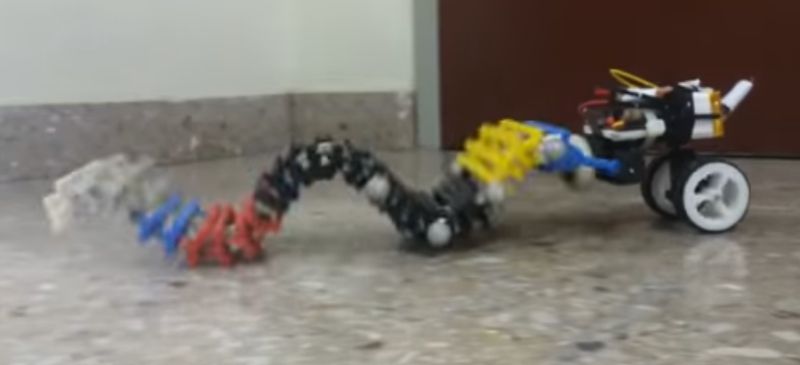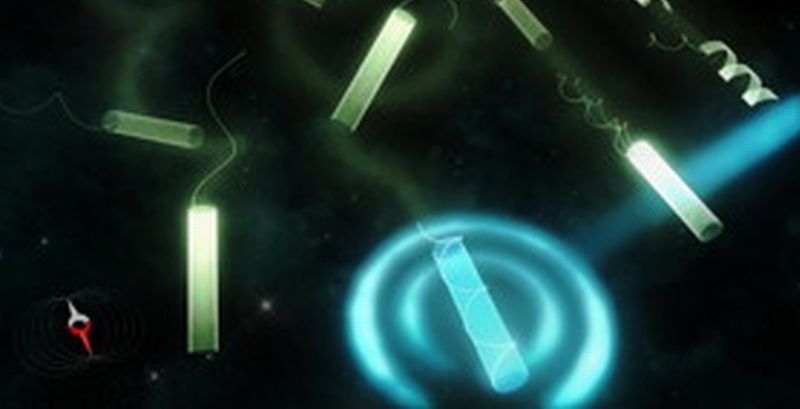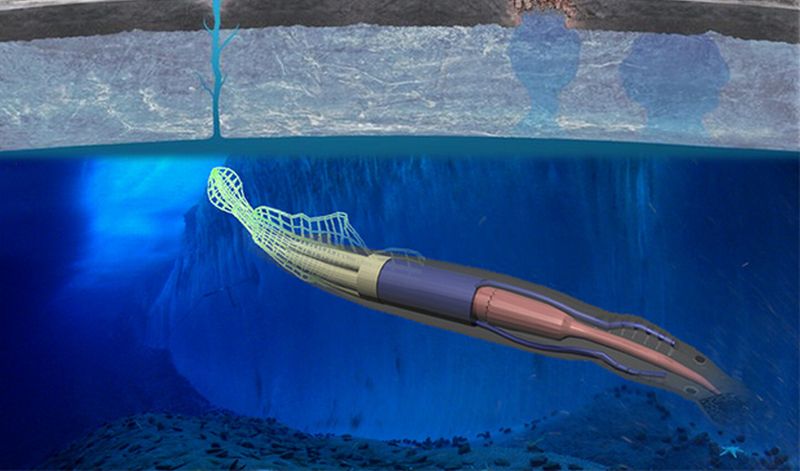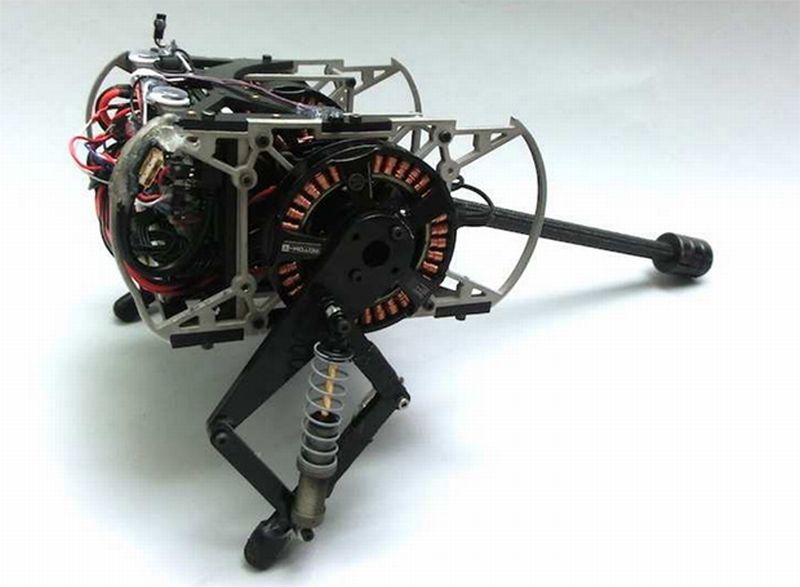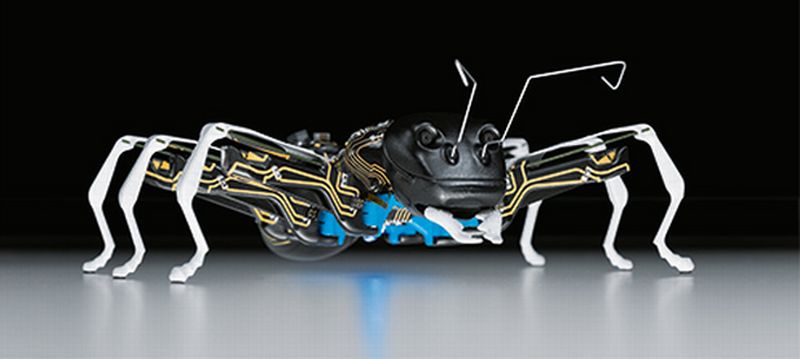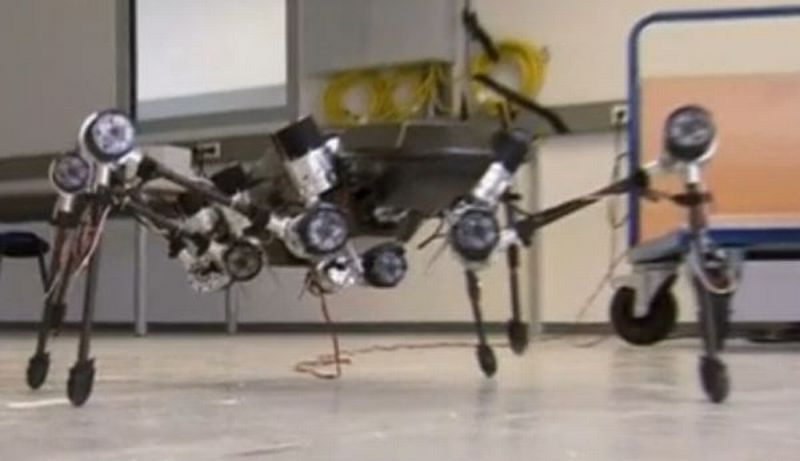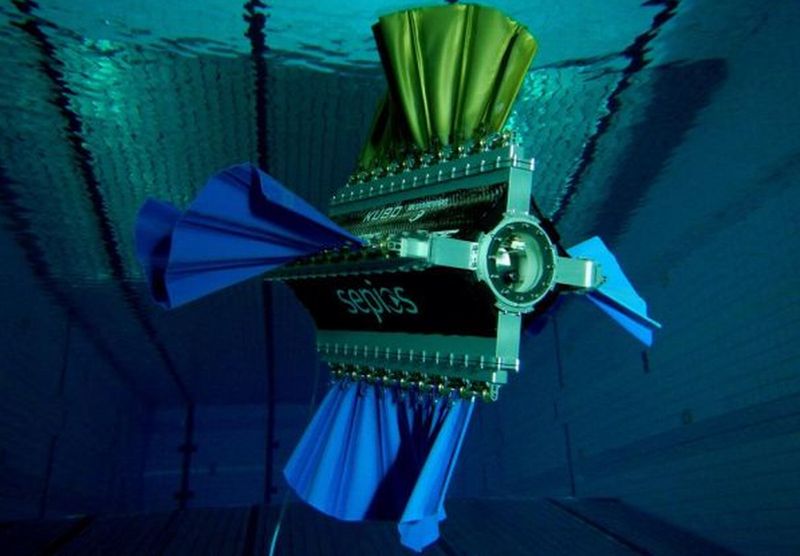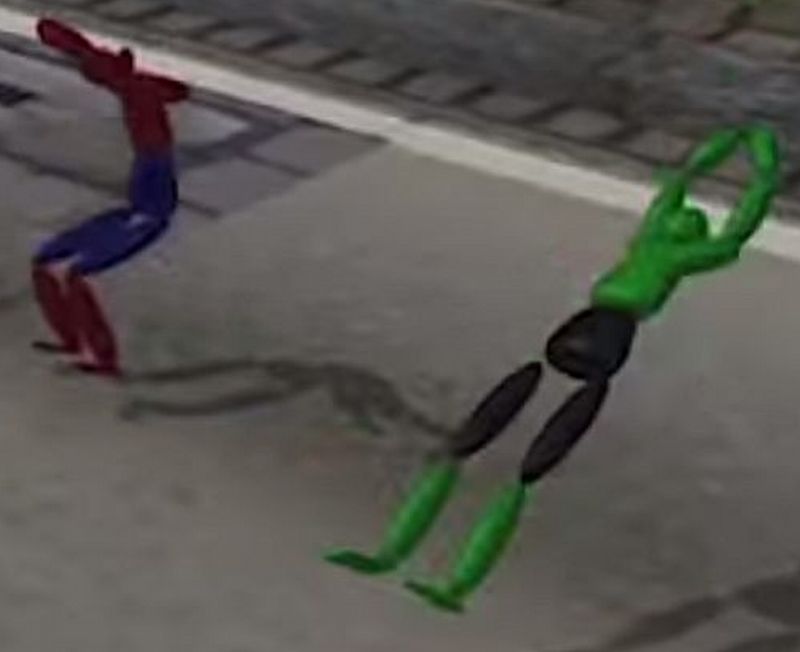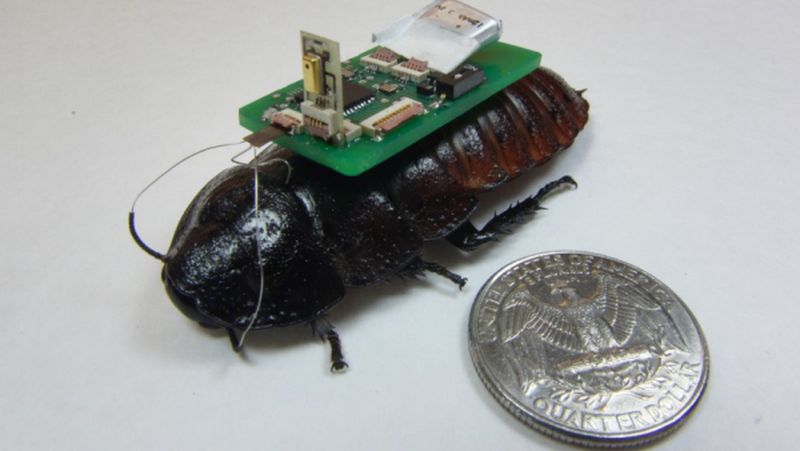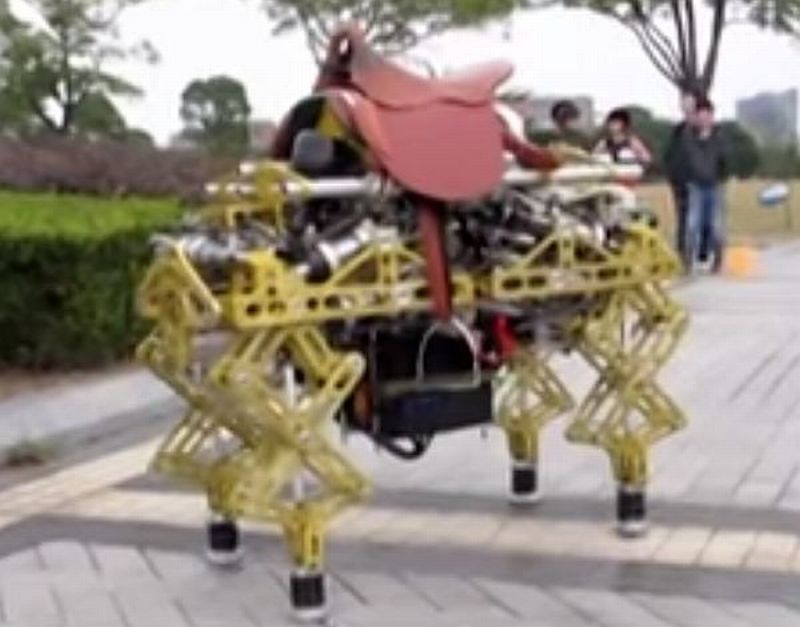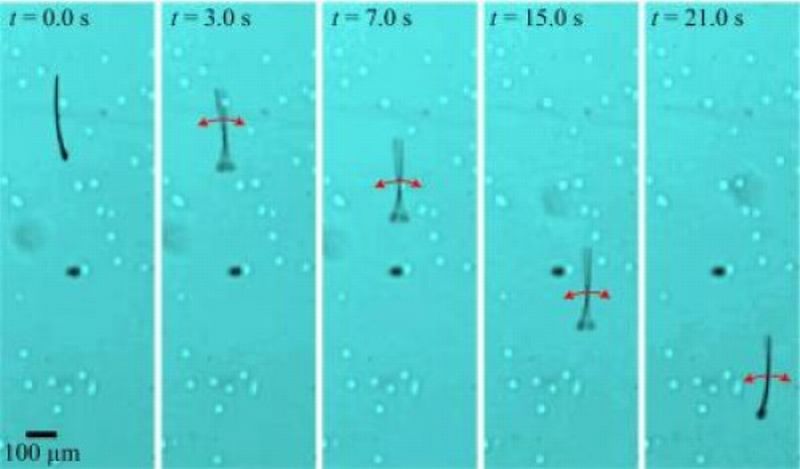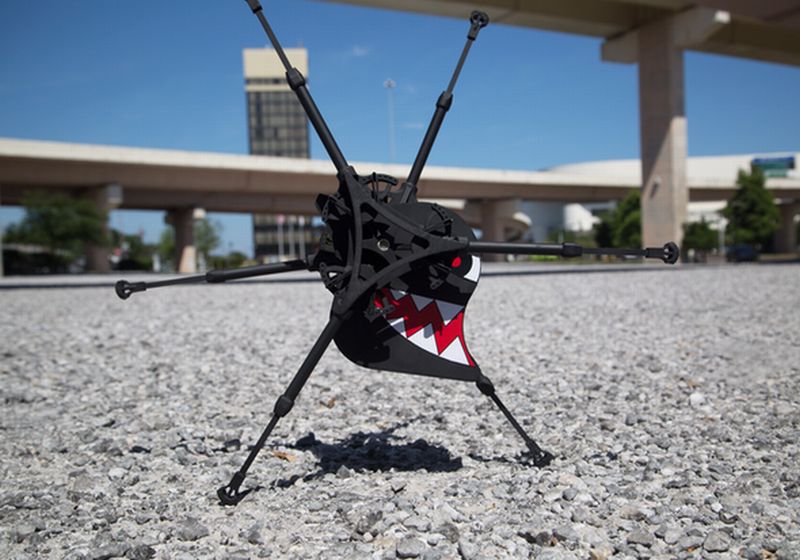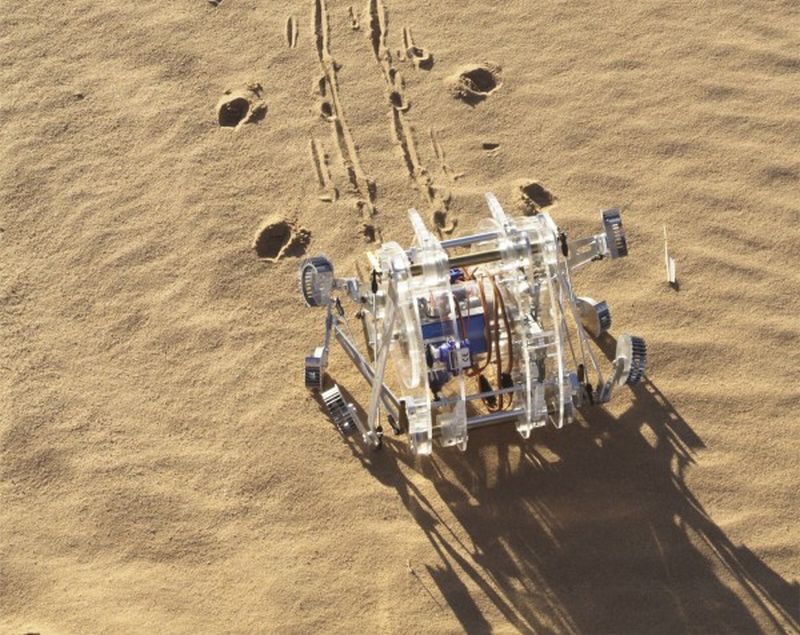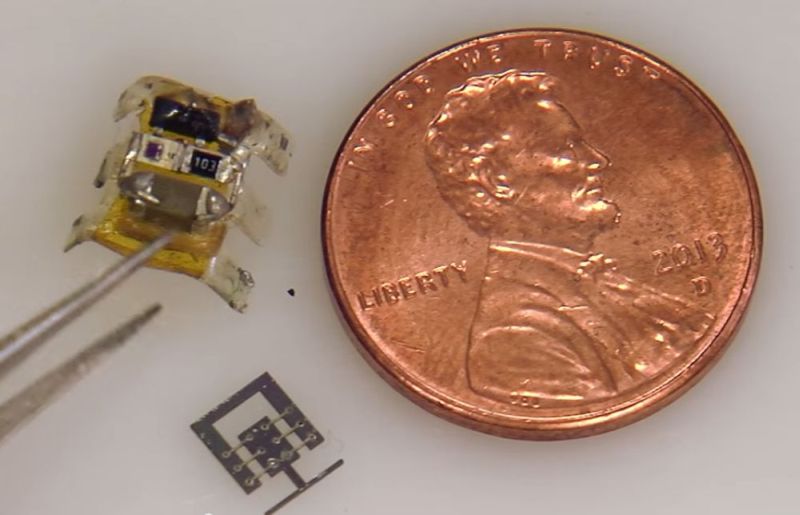Adding to the existing list of bio inspired robot, researcher David Zarrouk and his team, from Ben Gurion University of the Negev has successfully developed an inchworm robot that employs a single motor to produce a pure wave motion and is known as SAW (Single Actuator Wave-like Robot).
Search Results for: biomimicry
Bacterium Inspired Remote Controlled Microrobots: Biomimicry
Researchers a Swiss Federal Institute of Technology, Lausanne have developed a technique that can be used for both, fabricating bio-inspired robots and secondly, furnishing them with higher configurations. Their newly constructed platform also helps in examining and researching robot designs along with their various modes of locomotion. Result of their platform is the production of complex yet reconfigurable microrobots – the nanobots can change their own shape by rearranging the connectivity of their parts- with high throughput.
Biomimicry: Roboeel to investigate Oceans of the Solar System
NASA funded robotic eel project is one of the most enticing venture so far. With an aim of delving deep into the ocean-bed of Europa, (Jupiter’s moon), the soft robotic eel is fabricated for scavenging electrical energy from magnetic fields and employing it for creating oxygen and hydrogen so that the machine can generate an outburst, which’ll further help for it’s propulsion. There is still more to it, the bot is sheathed with a soft flexible cover, which is not only stretchable but also electroluminescence.
Biomimicry: Gerbil inspired tailed biped Robot Jerboa
Inspired by a small rodent, gerbil, researchers at the University of Pennsylvania have unleashed robot Jerboa. This dynamic bot has no legs but actuated hips and a tail through which movement is achieved.
Biomimicry: Bionic Ants for future’s factory workers
Biomimicry has always fascinated developers, every now and then they try mimicking nature into the human work force. This time, Festo, German technology firm, has come up with human hand sized robotic ants, which the developers envision might collaborate on factory production systems in the near future.
Hector Robot is the Giant Stick Insect: Biomimicry
Biomechatronics researchers at Bielefeld University, Germany have come up with a bot called Hector that is inspired from stick insect, another invention in the field of biomimicry. The insect bot has six limbs with an ability of functioning independently. The embedded sensors help it in reacting autonomously to its external setting and accordingly assist in learning from experience. Only for research platform Jan Paskarbeit, the developer envisions Hector in areas like testing animal locomotion theories. The bot however, is not designed with an intention of severing humans in areas like…
Sepios the Nautical Robot inspired by Cuttlefish: Biomimicry
The Swiss Federal Institute of Technology (ETH) in Zürich has come up with a robot, movement of which is inspired from cuttlefish. One of its own kind, Sepios is a bot with four orthogonal fins. Peep on the link below and see the undulating fin propulsion from the ETH’s nautical robot:
Biomimicry: Robotic Spy Fish will do the Reconnaissance (ISR) Missions
Boston Engineering in collaboration with the U.S. Navy is developing a ‘tuna fish’, their new unmanned underwater vehicle. Developers envision that the fish would autonomously navigate across the sea for fetching information including surveillance and reconnaissance (ISR) missions. The project has been named Project Silent Nemo that comes from Disney’s famous movie, Finding Nemo, where Nemo was the subject of search but in here, Nemo will do the finding. Swimmer drone The unmanned underwater vehicle weighs around 100-pound while it’s length is about 5 feet. As a product of…
Robots would now Learn to Fall from Cats and Divers: Biomimicry
It’s not just the design but the falling mechanics too are being studied for implementation by researchers in biomimicry. In an attempt to develop natural reflexes in robots, scientists at the US are studying the techniques through which cats and athletes twist their body mid-air without being injured at the landing. By recreating the similar reflexes in droids, researchers aim to cut down the probability of robots crashing especially during hazardous missions like search-and-rescue operations.
Biomimicry: Cyborg Cockroach would be the New Rescuers
Cockroaches are one organism that is disliked by a majority of people but these creepy looking creatures is soon going to help in tracing humans trapped in disaster sites. Similar to penny sized micro robots, these tiny roaches can make its way through the extremely small spaces where others like dogs, camera or robots might not reach thus making rescue operation slow and risking lives of people.
Biomimicry: Baby Elephant with Parallel Mechanism Legs
Until recently, most robots were designed to assist humans, right from the kitchen to their office premises we have seen these bots performing multi-tasking. Many fascinated machines have been fabricated keeping the nature in mind and this has led to a new field within robotics called the biomimicry. Every now and then, researchers come up with mind blowing ideas and concepts which creates an awe amongst the masses and this time, researchers at Shanghai Jiao Tong University, Shanghai, China has created the same wave with their ‘baby elephant’. The robot…
MagnetoSperm Microrobots for the Nanoworld: Biomimicry
Nature does not stop us marveling at its splendor be it at macro level or micro scale. There are limitless options to investigate and get inspired. Biomimicry is one such field in robotics, which is completely drenched with nature’s splash. Researchers do not leave any stone unturned when dealing with robos inspired from nature, lately a concept is put forward by experts at the University of Twente, Netherlands. They have taken inspiration from nature’s locomotion at microscale and have combined the process of two micro-scale entities like magnetotactic bacteria and…
Biomimicry: Outrunner’s Steering based on Bipeds Walking Mechanism
In an effort of inculcating the sci-fi trends – where robots are doing the great things – into the real world, researchers at the Robotics Unlimited, a spinoff of the Institute for Human and Machine Cognition (IHMC) in Florida, are working hard towards designing bots that might assume a role into the everyday life of humanity. Thinking on the same lines, they have developed a Kickstarter project, aim of which is to fabricate next-gen robots. The robots are designed keeping simplicity and convenient operation in mind along with affordability. After…
Biomimicry: Tabbot Mimics Cartwheel Movement of Desert Spider
After the termites inspired crew of tiny autonomous bots, insect-inspired Micro-Robots and Gimball, biomimicry has a new entrant called the Tabbot. It is a tiny bot inspired from Morocco based spiders famous for doing cartwheels effortlessly. Interestingly, these spiders are capable of doing cartwheels up and down the sand dunes. Ingo Rechenberg, a professor at the Technical University of Berlin has been credited for this discovery. In order to preserve and utilize the resourcefulness of this unique mode of locomotion, the researcher has already fabricated a small bot that works…
Biomimicry: Insect-Inspired Micro-Robots For Stealthy Surveillance
Drawing inspiration from tiny insects, researchers at the University of Maryland, are developing the world’s tiniest mobile robot, suitably named as micro robots. These tiny robots are designed to take the long distance leap just as bugs do, with the aim of moving quickly or jump over any obstacle with ease in extremely rough terrain. Sarah Bergbreiter leading the research and other teammates from UM, envision the micro robots helping rescue teams in searching victims by quickly crawling through the rubble, at the disaster site, where humans and other traditional…

